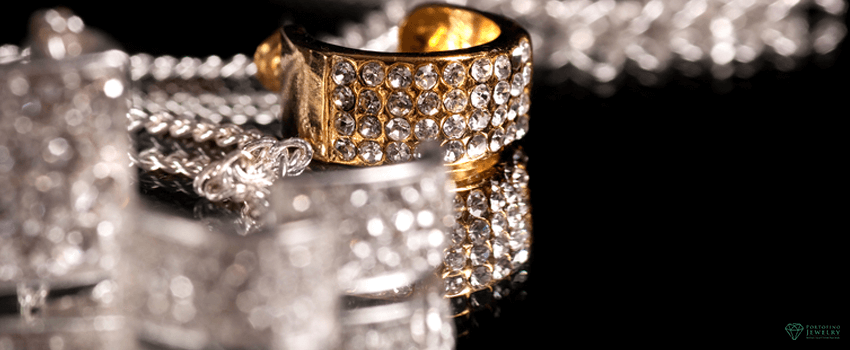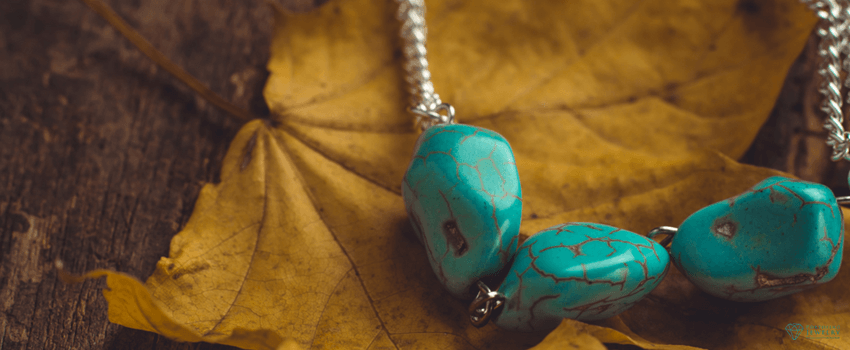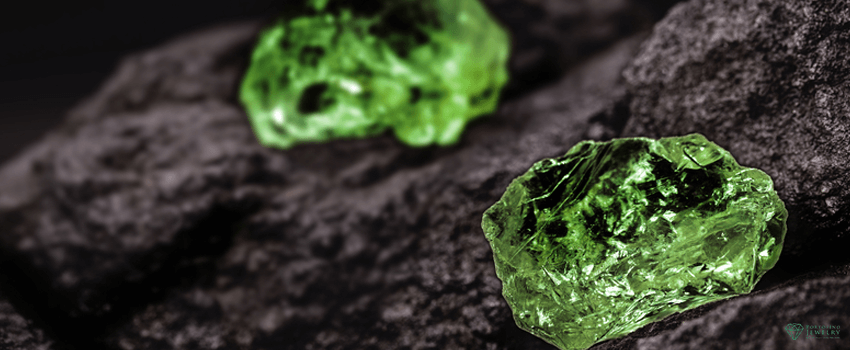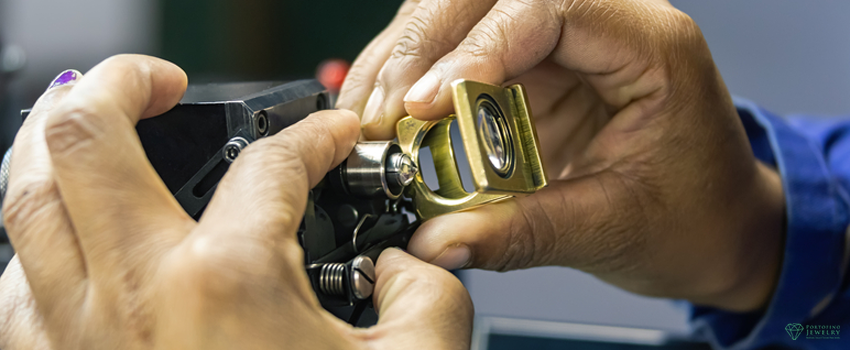Jewelry stores can be fascinating places to explore because of the dazzling displays of precious metals and stones that grab your attention. Yet, for others, shopping for a new piece of jewelry can be daunting because they are uncertain about what they want. For these people, several different questions confront them. For example, do you think you should invest in platinum or silver? What is the best metal to set a diamond in? What will be the best metal to compliment the particular style you have in mind?
Consider reading this helpful guide to common metals for jewelry if you feel a little overwhelmed as you begin your quest. This guide will discuss each metal and alloy’s qualities, advantages, and disadvantages.
3 Types of Noble Metals Used in Jewelry
Silver, gold, and platinum are the three metals that will always be present when purchasing metal jewelry. They are designated as “noble” metals in the periodic table due to their resistance to corrosion and oxidation. Furthermore, these three metals are frequently used in different types of jewelry because of their malleability and inherent beauty.
Silver
Pure silver is a soft, pliable, grayish-white metal frequently used in various types of jewelry. Due to its malleability, silver is frequently combined with other metals to make a more durable alloy. A “925” stamp indicates that a piece of jewelry is “sterling silver,” or 92.5% pure silver combined with jewelry metals such as copper.
Silver is favored for everyday jewelry since it is less expensive than other metals. Silver is utilized for necklaces, earrings, bracelets, and fashion rings. However, despite its affordable price, silver jewelry scrapes and oxidizes with time if worn too frequently. If you intend to wear silver frequently, proper cleaning and storing will help it last longer.
Platinum
Bright white, naturally beautiful and durable, is frequently the first hallmark of high-end jewelry. Platinum is a rare metal with a purity grade of 900 or 950 and is only blended with a trace amount of palladium, iridium, or rhodium to increase its strength. It is also hypoallergenic, making it a desirable alternative for individuals with sensitive skin.
Platinum is frequently combined with diamonds and other gems in many jewelry stores. Additionally, platinum is one of the most frequently used jewelry metals for wedding bands because it gleams as brightly as any gem.
Gold
Gold has a long history as royalty’s “preferred metal” and is arguably the most coveted metal. From Egyptian pharaohs to the Queen of England, royalty recognizes gold’s outstanding qualities. People adore gold not only for its beauty but also for its practicality. It is malleable, does not tarnish or corrode, and jewelers may recycle old, damaged gold to produce new jewelry.
Gold has a soft, yellowish tint in its natural condition. For that reason, jewelers mix other metals with gold to produce a product that is stronger and available in various colors, such as:
- Yellow Gold – It is made from pure gold, silver, and copper. It has a glorious, warm yellow color and is commonly used in engagement rings and expensive metal jewelry. Yellow gold is also ideal for luxurious designer pieces, giving the wearer a special touch.
- White Gold – It combines pure gold with silver, nickel, or palladium. This gold’s elegant white tone makes it ideal for those with exquisite taste, and it’s an affordable alternative to platinum for engagement rings.
- Rose Gold – It is produced by combining pure gold with copper, giving it a pink, “rose-tinted” appearance. This metal’s purity relies on the shade of pink desired by the wearer, as it might be a darker rose or a softer, bright pink.
- Gold-Plated – It utilizes the electroplating method to apply a thin layer of gold to a base of copper, silver, or other metals. The gold will ultimately tarnish and can even be scratched, but it is cheaper than traditional gold.
6 Types of Base Metals Used in Jewelry
1. Aluminum
Aluminum may be present alone or in combination with other metals in some costume jewelry and artisanal creations. It is silver in hue and has a beautiful luster. With the use of anodizing technique, it can be tinted in vibrant, attractive hues.
2. Brass
Brass is a popular material for costume jewelry due to its appealing gold hue and low cost compared to noble metals. Brass is a mixture of copper and zinc, and its qualities rely on the proportions of these two metals employed in its manufacturing.
3. Titanium
Titanium is the hardest naturally occurring metal in the world and is hypoallergenic like platinum. Since titanium does not tarnish or scratch readily, it is an ideal material for those who abuse their jewelry. It is often used in men’s jewelry, especially necklaces and rings. Also, it appeals to men as a wedding ring because it is powerful yet, at the same time, subtle.
4. Stainless Steel
Stainless steel is an artificial metal with a bright, polished sheen or a brushed texture for a distinctive appearance. It is mostly used for timepieces, jewelry for males, and some jewelry for women. Stainless steel is scratch- and tarnish-resistant, and its affordable pricing makes it an excellent material for everyday jewelry.
5. Bronze
Bronze, like brass, is an alloy of various metals. Typically, it consists of copper, tin, and zinc. This beautiful metal has a brownish-gold hue that complements a range of gemstones and materials.
6. Palladium
Palladium, a white precious metal, is gaining favor as an aesthetic metal of choice. Although hypoallergenic, most palladium jewelry is a combination of 95% palladium and 5% other metals.
Metals to Avoid in Jewelry
Don’t let sparkling jewelry pieces deceive you into buying ones that might contain toxic metals. Take a look at this carefully validated list of metals to avoid in jewelry.
- Lead
- Cadmium
- Chromium
- Arsenic
- Manganese
- Antimony
- Beryllium
- Mercury
- Selenium
- Nickel
These metals can negatively impact your skin and health when used individually. Furthermore, those who work with harmful materials like jewelers, goldsmiths, and craftspeople may experience various health issues. To avoid any serious repercussions, inquire with your jeweler about the metal composition of the jewelry before purchasing it.
Conclusion
It is not the type of jewelry metal that matters but how much you or your loved one cherishes the piece. Choose the jewelry that best expresses your style and character, whether gold, platinum, silver, or another metal selection. To some extent, price, color, and durability will play a part in your decision-making process, but ultimately which metal you choose for jewelry will depend on how you feel about the metal and how it compliments your style.
Let Portofino Jewelry Guide You in Choosing The Ideal Metal For the Jewelry of your Dreams.
Without metals, there would be no such thing as exquisite jewelry. The wide selection of available metals means that you can find something to suit your needs, no matter your budget. At Portofino Jewelry, a top-notch jewelry store in Avon, you’ll have the opportunity to choose the right jewelry for your collection based on the metal you prefer. With our team of experts’ guidance, you’ll find the jewelry of your dreams. Visit us now!









